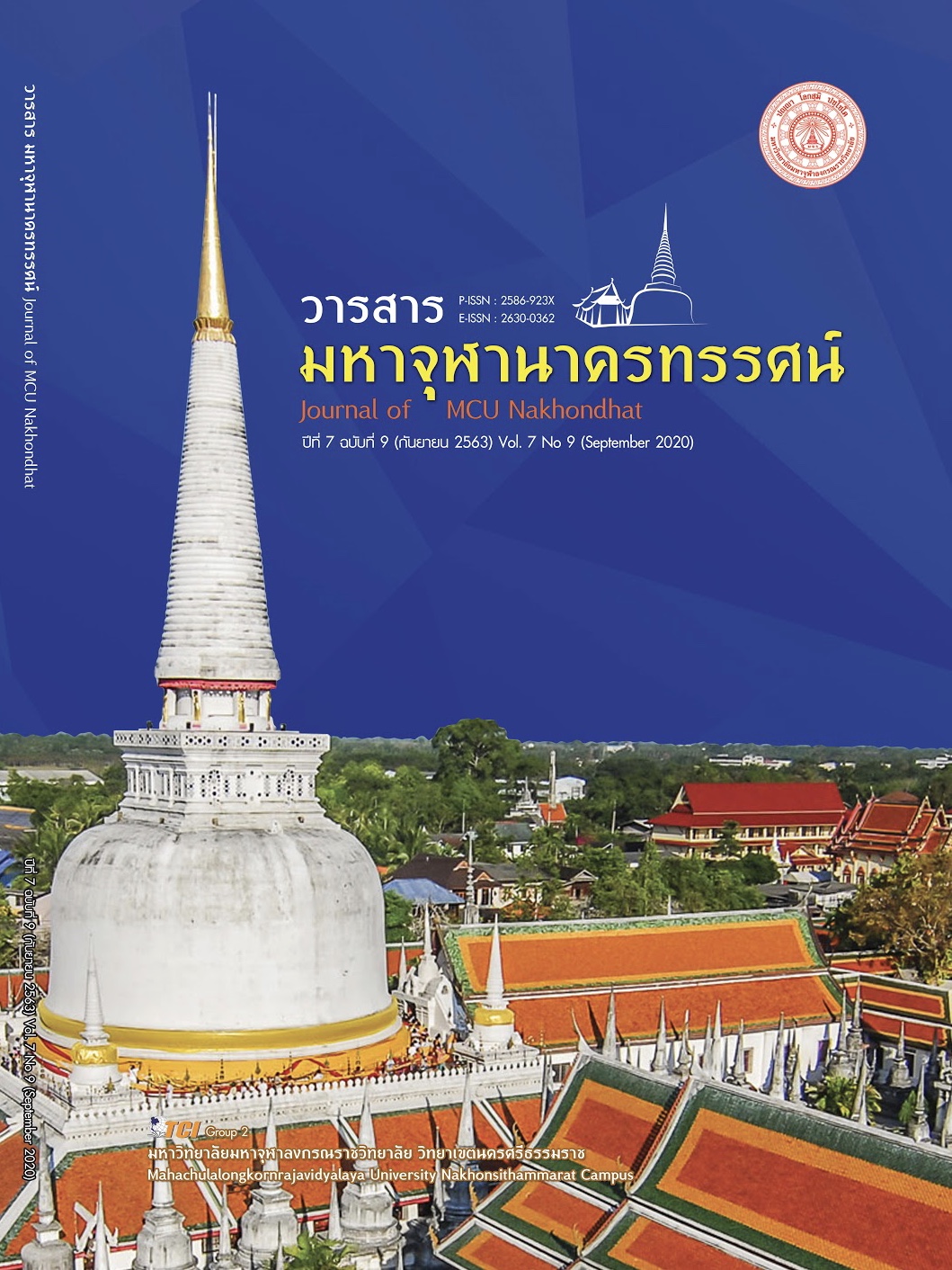GUIDELINES FOR ADAPTATION AND ROLE OF BUDDHIST FEMALE PRIESTS IN THAI SOCIETY 4.0 ERA
Main Article Content
Abstract
This article has 3 objectives which are 1) to study the origin and development of Buddhist female priests 2) to study the adaptation and role of Buddhist female priests in Thai society 4.0 era, and 3) to propose the guidelines for adaptation and role of Buddhist female priests in Thai society 4.0 era. This research is a qualitative research done by studying documentaries and related research works including the interview of 4 Buddhist companies which are Bhikkhu, Bhikkhuni, Ubasok, Ubasika, totaling 12 monks / persons, by describing with descriptive analysis. The results of the research found that Buddhist female priests in the Buddhist era were only Bhikkhunis. Which the origin of Bhikkhuni arose from the question of Ananda to the Lord Buddha about the internal potential of humans over femininity. To the end, the Lord Buddha allowed the ordination of Mahapajapati Gotami to be the first Bhikkhuni in Buddhism. In regards to the adaptation and role of Buddhist female priests in Thai society it was found that the time when the priestly ambassadors propagate Buddhism to Suvarnabhumi did not appear to have Bhikkhuni occurring in the history of Thai society. It appears evidence that only the nuns played the role in the Ayutthaya period which is considered to create one's own role as part of Buddhism until the present day, the nuns have to adapt and create a great role in society. Guidelines for adaptation and role of Buddhist female priests in Thai society 4.0 era proposed to laid a strong basis to develop in the model namely, "Dual dimension of adaptation and role of Buddhist female priests In Thai society 4.0 era", which provides guidelines for the Buddhist female priests to adapt and play appropriate roles at the individual level as well as at the society and community level.
Article Details
References
เดือน คำดี. (2551). การรื้อฟื้นภิกษุณีสงฆ์ของฝ่ายเถรวาท. วารสารพุทธศาสน์ศึกษา จุฬาลงกรณ์มหาวิทยาลัย, 15(3), 5-80.
ประคอง สิงหนาทนิติรักษ์. (2516). บทบาทแม่ชีในการพัฒนาสังคม. ใน รายงานการวิจัย. มหาวิทยาลัยธรรมศาสตร์.
ปรีชา ช้างขวัญยืน. (2559). สตรีในคัมภีร์ตะวันออก. ใน โครงการเผยแพร่ผลงานวิชาการ. คณะอักษรศาสตร์ จุฬาลงกรณ์มหาวิทยาลัย.
พระพรหมคุณาภรณ์ (ป.อ. ปยุตฺโต). (2546). พจนานุกรมพุทธศาสน์ ฉบับประมวลศัพท์. กรุงเทพมหานคร: สำนักพิมพ์ผลิธัมม์.
พระมหากล ถาวโร (มั่งคำมี). (2550). การศึกษาวิเคราะห์บทบาทของสตรีในพระพุทธศาสนา: ศึกษาเฉพาะกรณีบทบาทของสตรีในสังคมไทยปัจจุบัน. ใน วิทยานิพนธ์พุทธศาสตรดุษฎีบัณฑิต สาขาพระพุทธศาสนา. มหาวิทยาลัยมหาจุฬาลงกรณราชวิทยาลัย.
พระศรีปริยัติโมลี (สมชัย กุลสลจิตฺโต). (2540). สตรีในพระพุทธศาสนา. ใน รายงานการวิจัย. มหาวิทยาลัยมหาจุฬาลงกรณราชวิทยาลัย.
พระสมรรถชัย มั่งคำมี. (2552). รูปแบบการจัดการองค์กรการปกครองคณะสงฆ์ไทย. ใน รายงานการวิจัย. มหาวิทยาลัยศรีปทุม.
พลเผ่า เพ็งวิภาศ. (2561). การวิเคราะห์บทบาทของภิกษุณีในพระพุทธศาสนา. ใน วิทยานิพนธ์พุทธศาสตรดุษฎีบัณฑิต สาขาวิชาพุทธปรัชญา. มหาวิทยาลัยมหาจุฬาลงกรณราชวิทยาลัย.
มหาจุฬาลงกรณราชวิทยาลัย. (2539). พระไตรปิฎกภาษาไทย ฉบับมหาจุฬาลงกรณราชวิทยาลัย. กรุงเทพมหานคร: โรงพิมพ์มหาจุฬาลงกรณราชวิทยาลัย.
มูลนิธิพุทธสาวิกา. (2563). ประวัติพระภิกษุณีธัมมนันทา. เรียกใช้เมื่อ 20 เมษายน 2563 จาก https://www.thaibhikkhunis.org/thai2556/index_option_com_content_view_article_id_29_Itemid_11.html


